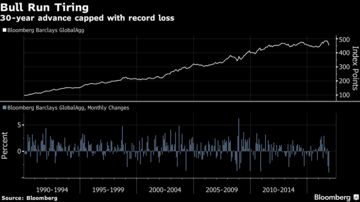The Federal Deposit Insurance Corporation (FDIC) and the Federal Reserve Board on Tuesday announced that Bank of America, Bank of New York Mellon, JP Morgan Chase, and State Street adequately remediated deficiencies in their 2015 resolution plans. The agencies also announced that Wells Fargo did not adequately remedy all of its deficiencies and will be subject to restrictions on certain activities until the deficiencies are remedied.
Resolution plans, required by the Dodd-Frank Act and commonly known as living wills, must describe the company’s strategy for rapid and orderly resolution under bankruptcy in the event of material financial distress or failure of the company.
In April 2016, the agencies jointly determined that each of the 2015 resolution plans of the five institutions was not credible or would not facilitate an orderly resolution under the U.S. Bankruptcy Code, the statutory standard established in the Dodd-Frank Act. The agencies issued joint notices of deficiencies to the five firms detailing the deficiencies in their plans and the actions the firms must take to address them. Each firm was required to remedy its deficiencies by October 1, 2016, or risk being subject to more stringent prudential requirements or to restrictions on activities, growth, or operations. The review and the findings announced today relate only to the joint deficiencies identified in April 2016.
The agencies jointly determined that Wells Fargo did not adequately remedy two of the firm’s three deficiencies, specifically in the categories of “legal entity rationalization” and “shared services.” The agencies also jointly determined that the firm did adequately remedy its deficiency in the “governance” category. In light of the nature of the deficiencies and the resolvability risks posed by Wells Fargo’s failure to remedy them, the agencies have jointly determined to impose restrictions on the growth of international and non-bank activities of Wells Fargo and its subsidiaries. In particular, Wells Fargo is prohibited from establishing international bank entities or acquiring any non-bank subsidiary.
The firm is expected to file a revised submission addressing the remaining deficiencies by March 31, 2017. If after reviewing the March submission the agencies jointly determine that the deficiencies have not been adequately remedied, the agencies will limit the size of the firm’s non-bank and broker-dealer assets to levels in place on September 30, 2016. If Wells Fargo has not adequately remedied the deficiencies within two years, the statute provides that the agencies, in consultation with the Financial Stability Oversight Council, may jointly require the firm to divest certain assets or operations to facilitate an orderly resolution of the firm in bankruptcy.
The Federal Reserve Board is releasing the feedback letters issued to each of the five firms. The letters describe the steps the firms have taken to address the deficiencies outlined in the April 2016 letters. The feedback letter issued to Wells Fargo discusses the steps the firm has taken to address its deficiencies and those needed to adequately remedy the two remaining deficiencies.
The determinations made by the agencies today pertain solely to the 2015 plans and not to the 2017 or any other future resolution plans. In addition to requiring that the firms address their deficiencies, in April the agencies also identified institution-specific shortcomings, which are weaknesses identified by both agencies, but are not considered deficiencies.
The agencies in April also provided guidance to be incorporated into the next full plan submission due by July 1, 2017, to the five firms, as well as Goldman Sachs, Morgan Stanley, and Citigroup, and will review those plans under the statutory standard. If the agencies jointly decide that the shortcomings or the guidance are not satisfactorily addressed in a firm’s 2017 plan, the agencies may determine jointly that the plan is not credible or would not facilitate an orderly resolution under the U.S. Bankruptcy Code.
The decisions announced today received unanimous support from the FDIC and Federal Reserve boards.
Feedback letters:
Bank of America (PDF)
Bank of New York Mellon (PDF)
JP Morgan Chase (PDF)
State Street (PDF)
Wells Fargo (PDF)
















